Ultimate Guide to Swimming Terminology and Swimming Drills
 Karen Parnell
November 30, 2021
Karen Parnell
November 30, 2021
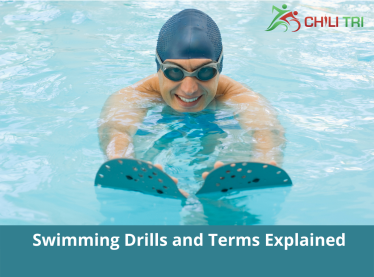
Ultimate Guide to Swimming Terminology and Swimming Drills
Get your FREE Swim Workouts for Triathletes E-book
Often in your training plan, you will see shorthand used to describe various parts of your training session. While these may make sense to athletes that have been training a long time those of use new to the sport may not recognised them. This blog describes the terminology that you might not be sure of or have not seen before. You will also see swimming drills mentioned so this blog also details the ones we tend to use in our plans.
Swimming Terminology
(+10s) = Rest Interval, take 10 seconds recovery before moving the next set or repetition.
B3, B5, B7 etc = Breath every 3 strokes, 5 strokes, 7 strokes etc.
BK = Back Stroke
BR = Breaststroke
BILATERAL = breath on your left and right sides e.g., 3 strokes breath left, 3 strokes breath left.
BEST AVERAGE (BEST AVE) = swim at the fastest average speed possible, achieving the best average time. Build = Swim progressively faster within the designated set.
BUILD: Get faster through the swim. For example, '100 build' means that your effort and pace should increase throughout the 100m, with each 25 slightly faster than the one before it.
C/D: The cool-down section of the session. Effort and pace should gradually decrease to 'very easy.'
COUNT = Count strokes per lap.
CATCH-UP= a drill in which one hand remains extended out in front in line with your shoulder until the other hand “catches up” or reaches the forward position.
CHOICE = you choose which stroke to swim, usually in cool downs so go steady!
CSS = 'Critical Swim Speed' - a close approximation to your lactate threshold swimming speed
CSS +4s/100 = Critical Swim Speed plus 4 seconds per 100 (or other variations between -10 to +10). For example, if your CSS pace is 1:40/100, you are being instructed to swim at 1:44/100 – set your Tempo Trainer Pro to beep every 26 seconds to help you pace out each 25. You will be instructed to “stay with the beeper”. Click the beeper icon for further instructions.
DESCEND (or 'Desc'): Descend the speed of each rep (get faster each time.) For example, '8 x 100m Desc' means to swim each of the 100m reps slightly faster (1-3 seconds) faster than the one before it.
DESC 2-2-2-2: Descend the speed of each pair of reps. So '8 x 100 Desc 2-2-2-2' means swim the first 2 reps at a particular speed, the next 2 reps slightly faster, etc.
DPS = Distance Per Stroke. Maximise the distance that each arm can propel the body. Count the number of strokes per 25m.
DR = Drills
Get your FREE swimming workouts book here.
EVEN / ODD: This means to perform one kind of drill on the ODD reps (1,3,5 etc) , and another kind of drill on the EVEN reps (2,4,6) etc.
FC: Front Crawl
FLY = Butterfly
FREE / FS: Freestyle or Front Crawl
FAST: As fast as you can swim for that particular rep.
FINGERTIP DRILL (FTIP) = A drill to improve swimming technique.
KICKING DRILL OR KICK = Kicking drill
MOD = Moderate pace, zone 3 effort.

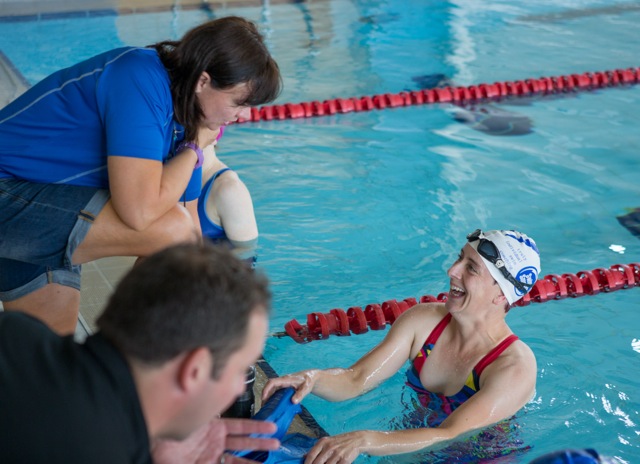
Get your FREE swimming workouts for triathletes book here.
NEGATIVE SPLIT (N/S): The second half of the rep is faster than the first part of the rep.
PULL: Swim with a pull buoy between your legs. This isolates the arms and gives you a more 'muscular endurance' workout for your upper body. If you don't know what pull buoy to get take a look at this guide to pull buoys.
RI: Rest interval. Shorthand 'on 20s' or 'on 20s RI' means the same thing - you get 20 seconds rest before the next rep.
SI= Swim Interval. Includes both the swim time and the rest time.
SINGLE ARM PULL = Pull with one arm with none working arm extended out in front (can be completed with fins to improve body position whilst learning the drill)
Sighting = A technique for seeing where you are going in open water. Introduce some open water skills to your pool swim with this drill. When turning your head to breathe also turn your head forwards to look in front of you, using crocodile eyes i.e. eyes just above the water, take a look then turn to breath to the side as normal. When trying to look forwards activate a strong stroke that will allow you to bring your very slightly shoulders higher out of the water. Do not do this every breath, start with every 3-4 breathes. Find the sighting/breathing pattern that works best for you to keep you going straight in open water. Remember there are no lane makes in the lake or sea!
T-PACE = Time Trial pace.
WU = Warm up
WD = Warm Down
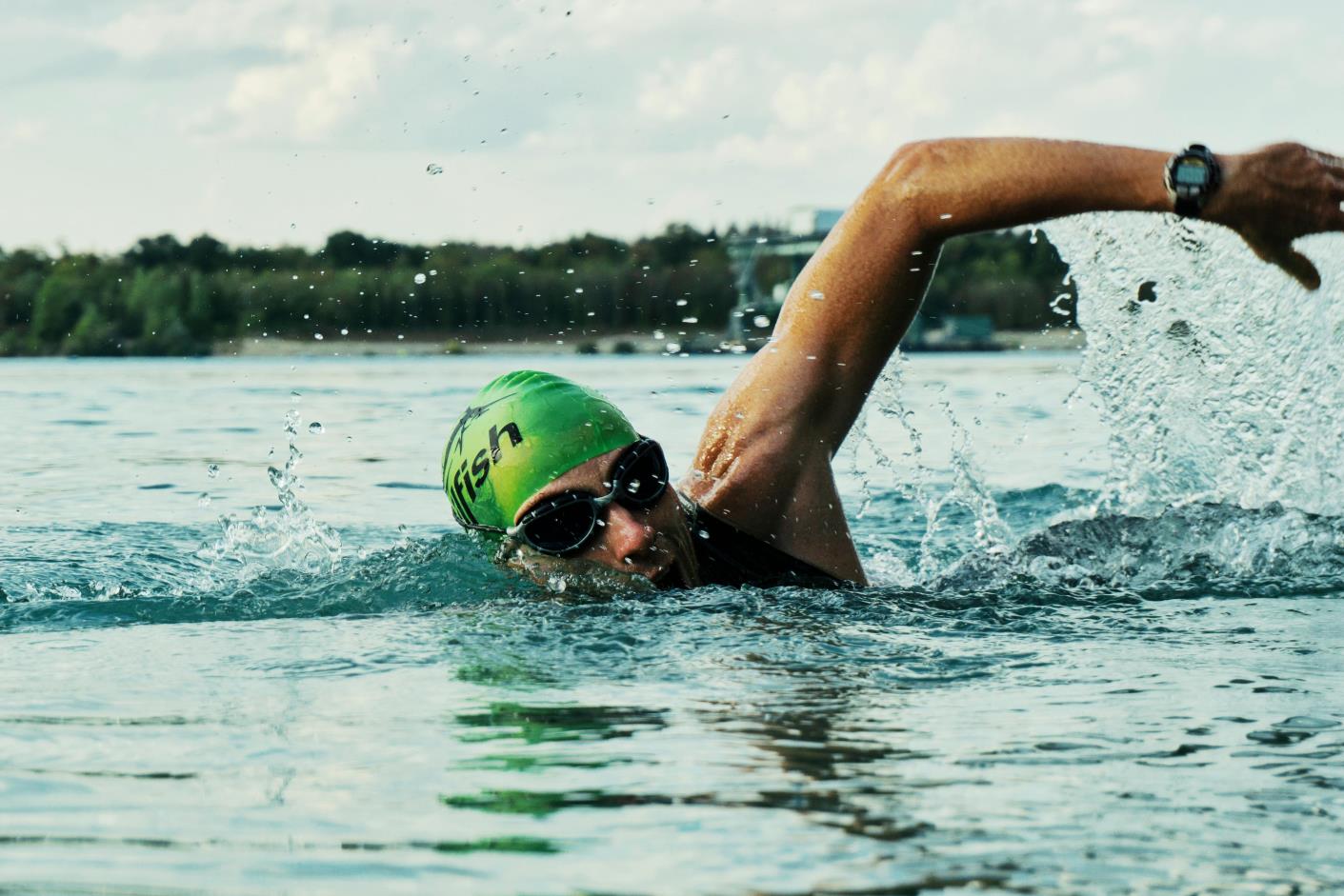
Get your FREE Open Water Swimmer Workout Book
Swim Training Zones
Zone 1 (Z1). Warm Up Effort level: 2 or 3 out of 10.
Zone 2 (Z2). Easy Effort level: 4 or 5 out of 10.
Zone 3 (Z3). Moderately Hard. Effort level: 6 or 7 out of 10.
Zone 4 (Z4). Hard Effort level or Strong: 8 or 9 out of 10.
Zone 5 (Z5). Very Hard, Fast or Maximum Effort level: 9 or 10 out of 10
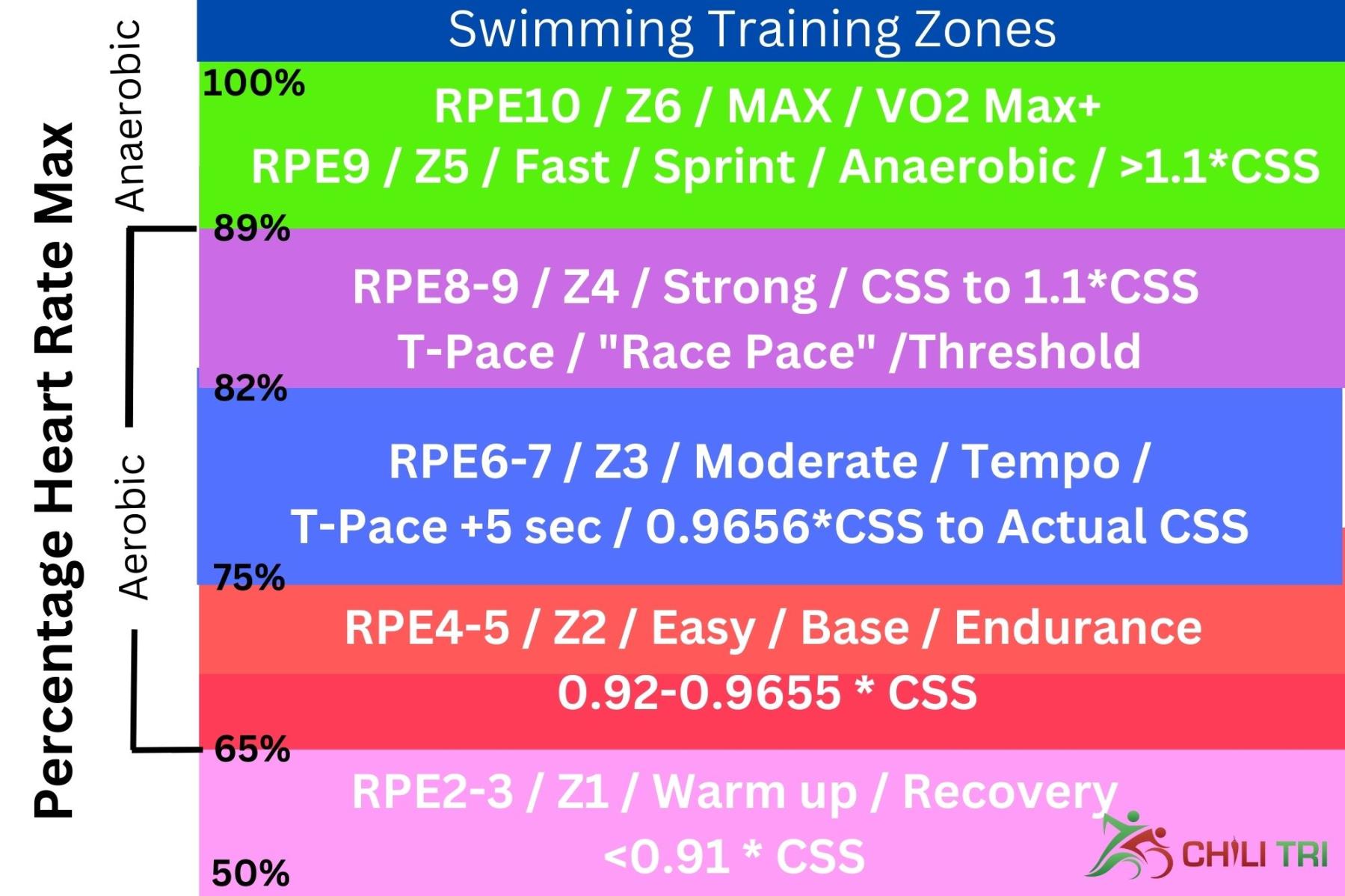
Learn more about swimming heart training training zones.
Get your FREE swimming workouts for triathletes book here.
Swimming Drills
Included within the swim sessions in training plans are usually drills. In my training plans I include videos of each drill so you can learn then technique. Here are descriptions of commonly used swimming drills and the shorthand name used in swim sets.
Drills can help you work on the phases of your freestyle stoke.
1. Catch
When initiating the stroke, begin by pressing the hand down - first from the wrist, then from the elbow. The elbow remains in a fixed position. Fingers tips facing the bottom of the pool.
2. Pull
When the hand achieves a vertical position the pull is initiated with the forearm. The elbow remains high as it presses wide past the shoulder. The fingers remain pointed down towards the bottom of the pool, maximizing the surface of the hand and forearm. The shoulder is rotated deep into the water. Finger tips below wrist and below your elbow.
3. Push
As the vertical surface of the hand and forearm press past the shoulder the action converts to a push back towards the feet. The elbow remains wide and the fingers pointing down as the push extends to the thigh.
4. Exit & Recovery
The final portion is the end of the arm stroke and the exit of the hand on the initiation of the arm recovery. The thumb will brush the thigh and the hand gradually turns with the little finger leading to release the water. The recovery phase, begins as soon as the hand exits the water and ends when your hand and arm drop back into the water in front of your body. A good recovery is when your elbow leads the recovery and is nice and relaxed.
Here are some swimming drills to work on all aspects of your freestyle/front crawl stroke.
Get your FREE swimming workouts for triathletes book here.
KICK DRILL
Swim on your front with your arms outstretched and use only your legs to aid propulsion. You must kick from the hips using a straight leg action. Concentrate on pointing your feet behind you and having floppy and flexible ankles. Engage your core to keep your hips elevated. Have your face in the water and fully exhale in the water before breathing to the front. You can use fins to help with your kick if necessary. Some people advocate using a kick float but this can put your body in an unnatural “banana” shape which is not a good posture for building swimming muscle memory. If you do want to use a kick board then the alignment kickboard from Finis will help you get streamlined in the water.
If you find kicking without a kick board difficult you can build up using swimming fins to begin with.
Get your FREE swimming workouts and tips book here.
SIDE KICK
Hold one arm out in front, rest your ear on your arm. Ensure your fingertips are below your wrist and your wrist is below your elbow. Place the other arm down by your side on your hip. Kick from the hips with the hips facing the sides of the pool. Concentrate on pointing your feet towards the end of the pool with floppy and flexible ankles. Engage your core to keep your hips elevated. You should keep your face pointing down to the bottom of the pool only turning your head sideways to breathe. You can use fins to help with your kick if necessary.
Get your FREE swimming workouts for triathletes book here.
DEAD MAN FLOAT
Push off the wall keeping your arms in front of the head then when you begin to lose momentum bring your arms back to being by your sides, where they now stay. Use only your kick for propulsion, using fins where necessary. Concentrate on body and head position, keep your head facing down with the chin slightly tucked inwards to your chest and push your chest out down towards the floor. The hips should gently break the surface of the water. If you become stationary, simply do a few arm strokes to gain momentum again.
Get your FREE Swim Workouts for Triathletes E-book
1-ARM DRILL
The 1-Arm drill allows you to concentrate on stroke accuracy. By isolating one arm, it allows you to focus on improving technique. Push off in a streamline position with both arms extended. Try one length swimming left arm only, leaving the right arm extended forward - once the hand has pushed past the hips, recover the arm back to the front of the stroke alongside the static arm. Pivot at the elbow, point the fingertips downwards. Repeat with opposite arm. If you find this difficult, add fins to assist.
Get your FREE swimming workouts for triathletes book here.
CATCH-UP
When swimming a standard Front Crawl, apply a slower arm revolution so that each arm is completing a full stroke before the other arm begins the next stroke. Complete a full stroke with your Right arm, holding your Left arm in a forward and outstretched position, with your Right hand coming through and making contact with your Left hand before you begin a full stroke with the Left arm. Continue to do this resisting the temptation to begin the next stroke too soon. A handy tip is to use a kickboard or pull buoy and hold this in the leading hand and exchange hands between strokes. If you struggle to maintain body position doing this drill hold a pull buoy between your thighs.
PULL
Swim standard Front Crawl holding a pull buoy between your thighs. Concentrate on the power needed to complete the full stroke without any kick being applied. You must be strict to not use any kick doing this. Do not speed your stroke up to compensate for the lack of a leg kick.
Get your FREE swimming workouts for triathletes book here.
PADDLES
Using Finis Freestyler or Finis Agility paddles promotes better hand placement in the water and correct catch and pull phases. We do not use paddles for strength but for promoting better technique. They will provide some extra power so should be used sparingly to prevent shoulder issues from overuse.
Get your FREE Open Water Swimming Sessions E-Book
CROCODILE EYES SIGHTING
Introduce some open water skills to your pool swim with this drill. When turning your head to breathe also turn your head forwards to look in front of you, using crocodile eyes i.e., eyes just above the water, take a look then turn to breath to the side as normal. When trying to look forwards activate a strong stroke that will allow you to bring your very slightly shoulders higher out of the water. Do not do this every breath, start with every 3-4 breathes. Find the sighting/breathing pattern that works best for you to keep you going straight in open water. Remember there are no lane makes in the lake or sea!
Get your FREE swimming workouts book here.
FIST DRILL
Close your hands like fists and swim normal front crawl. This takes away the paddle action of your hand and you will need to concentrate on the position of your forearm to be used to pull you through the water. Don’t tighten your fist too much as it may refer tension up through the forearms to the shoulders.
Get your FREE Open Water Swimming Sessions E-Book
6/1/6 or 6-kick Switch
Helps develop your alignment, posture and catch set up position while introducing a stroke. To do this do 6 kicks on the side with your head facing the bottom of the pool, take one stroke and then rotate on to the other side, breathe and do 6 kicks on the other side. This is most commonly done with fins. Try to keep your body at right angles to the bottom of the pool.
6/3/6: Both developing your posture and alignment in the water as well as rotation, catch set up position and full stroke arm. It´s similar to 616 so is 6 kicks on the side, take three strokes and breathe, 6 kicks on the other side.
Get your FREE swimming workouts book here.
SCULL # 1
This drill Improves your initial catch and feel for the water. Scull with both arms symmetrically just wider than your shoulders and back into the middle, changing angle of hands, keeping pressure on the water, fingertips about 30cm below surface and lower than wrist lower than elbow lower than shoulder, chin on the surface, with pull buoy to isolate your arms.
Get your FREE Open Water Swimming Sessions E-Book
NEW DOGGY PADDLE
This is a powerful drill for developing feel for the water and bent elbow catch, rhythm and timing and keeping hand in line with shoulder throughout catch and pull phase. Using a pull buoy, alternate catch and pull strokes through to the hip, recovering underwater, extend and catch in line with shoulder by tipping the wrist and bending your elbow, no pauses.
Get your FREE swimming workouts for triathletes book here.
You can see more drills videos on the ChiliTri YouTube Channel or use the QR code below.

Essential Swimming Kit
The essential swimming kit includes goggles, paddles, pull buoys, fins and kickboards. In this section we will discuss these with recommendations on the best types.
If you would like to work on your critical swim speed (CSS) or work on increasing your arm turnover or cadence then a Finis Tempo Trainer Pro is a good investment. This is a more advance piece of kit and you can read about hoe to use it here.
As with all training kits it's work learning how to used them correctly. Get in touch if you would like advise.
FREE Open Water Swimmer Workout Book
Paddles
First up in the kit line up are paddles. I like to recommend the Finis Freestyler and Finis Agility paddles as not only they do they work on your swim power but they also work on your technique - all in one drill session!
They are also less likely to damage your shoulders as their surface area is not as large as other plus they are not heavily strapped to you hand and wriggle around giving you feedback on your swimming. This feedback will put your hand and arm in the correct position and put less stress on your shoulder.
If you use traditional paddles then any poor technique will be punished with aching and even damaged shoulder muscles.
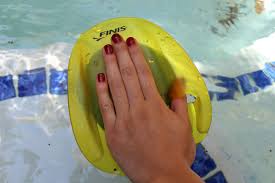
The Finis Freestyler Paddles
Specifically designed for freestyle training, the Freestyler Hand Paddles plane the hand forward through the water, improving reach and distance-per-stroke. With a long fin shape and unique skeg design, the Freestyler Hand Paddles promote a strong pull through, better hip-rotation and increased efficiency. An adjustable finger strap offers a perfect fit and the narrow surface area helps prevent shoulder strain.
The photo below shows how to wear them. No gripping with your fingers - just let them wriggle until your stroke it perfect! No wriggle means a great entry, catch, pull and push.
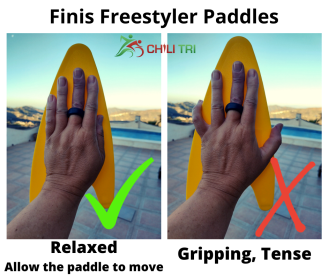
How to use a Finis Freestyle paddle - don't hold on, let it move freely.
FREE Open Water Swimmer Workout Book
Finis Agility Paddle
The Agility Paddles are strapless and designed to provide swimmers with instant stroke feedback – even after just one lap! Now made in a new floating material that is great for all swimmers, from learn-to-swim to triathletes. The strapless design fits the natural contour of your hand and teaches you to apply positive pressure throughout your stroke.
If you do not maintain a proper stroke, the paddle will let you know by shifting, wriggling or falling off. This simple paddle will keep you conscious of your technique, build strength and heighten your feel for the water.
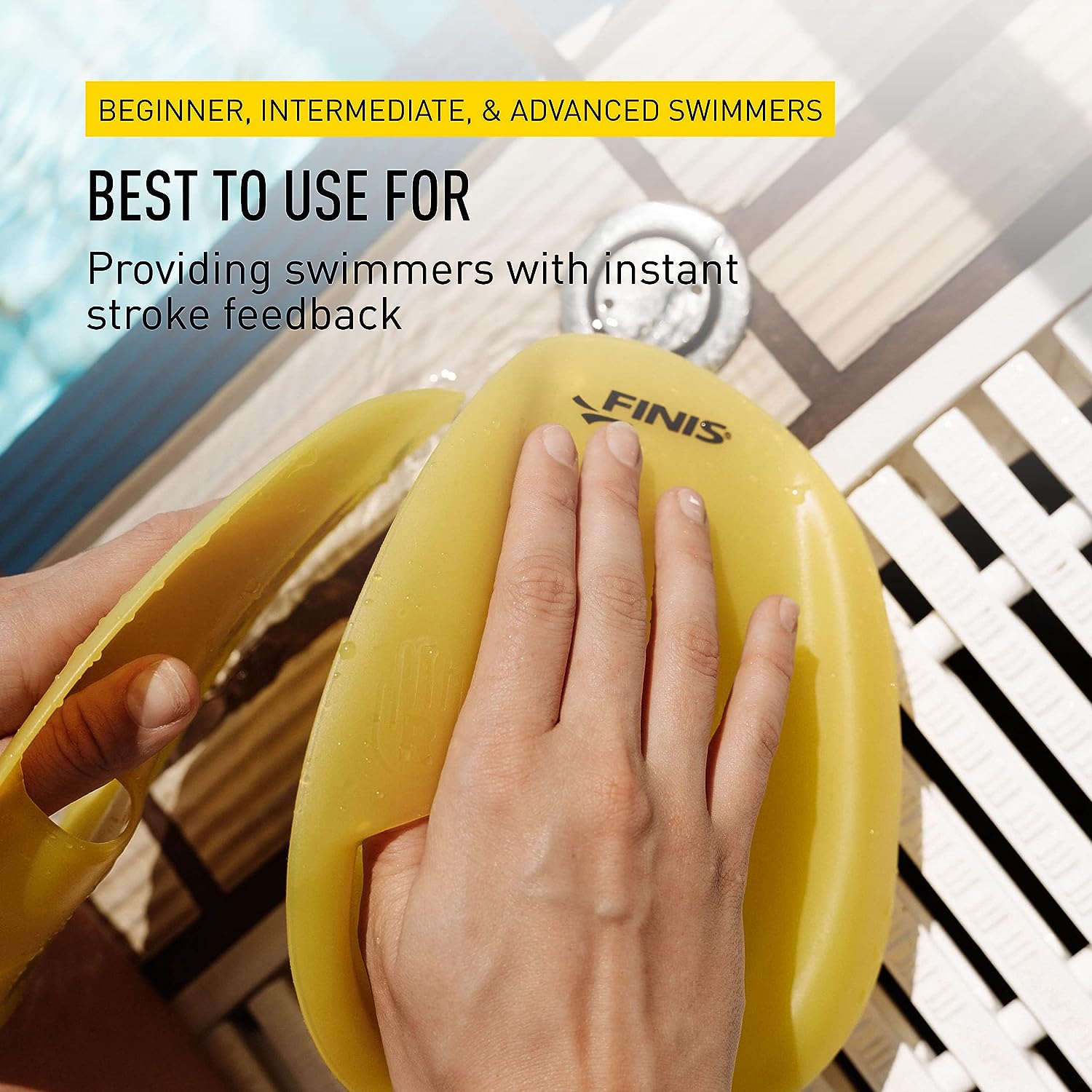
Kickboards
Using a kickboard can enhance your workout. Along with swim fins, goggles and pull-buoys, swimmers can use kickboards as part of a complete cardiovascular workout. Athletes of all ages and abilities can reap the benefits by using kickboards to isolate leg movements, remain streamlined and take a breather during a lengthy workout.
If you need to use a kickboard for your kicking drills I would recommend a Finis Alignment kickboard as you can get in to a prop swim aligned position and not "banana" your back. If you curve your back like a banana it can cause pain.
The Alignment Kickboard uses a hydrodynamic design to improve body position. The stabilizing hand strap allows complete control of the board without gripping, creating a perfect alignment from the fingertips to the toes. When used properly, the Alignment Kickboard sits just below the waterline so swimmers can lengthen their body without kicking at an incline. Shorter in design, the Alignment Kickboard puts less pressure on shoulders as compared to standard kickboards. A great training tool, the board can be used to do one arm and side kicking drills in addition to normal kicking. When paired with a snorkel, the Alignment Kickboard encourages proper head alignment and improves overall technique.
Kicking helps your body position, speed, and overall efficiency in the water while swimming. To strengthen your kick for freestyle, isolate your legs and focus on keeping a steady kick just beneath the surface of the water. Initiate your kick from your hips, bend your knees slightly, and keep your ankles relaxed while kicking. When using a kickboard, hold the top with your hands and rest your arms on the board.
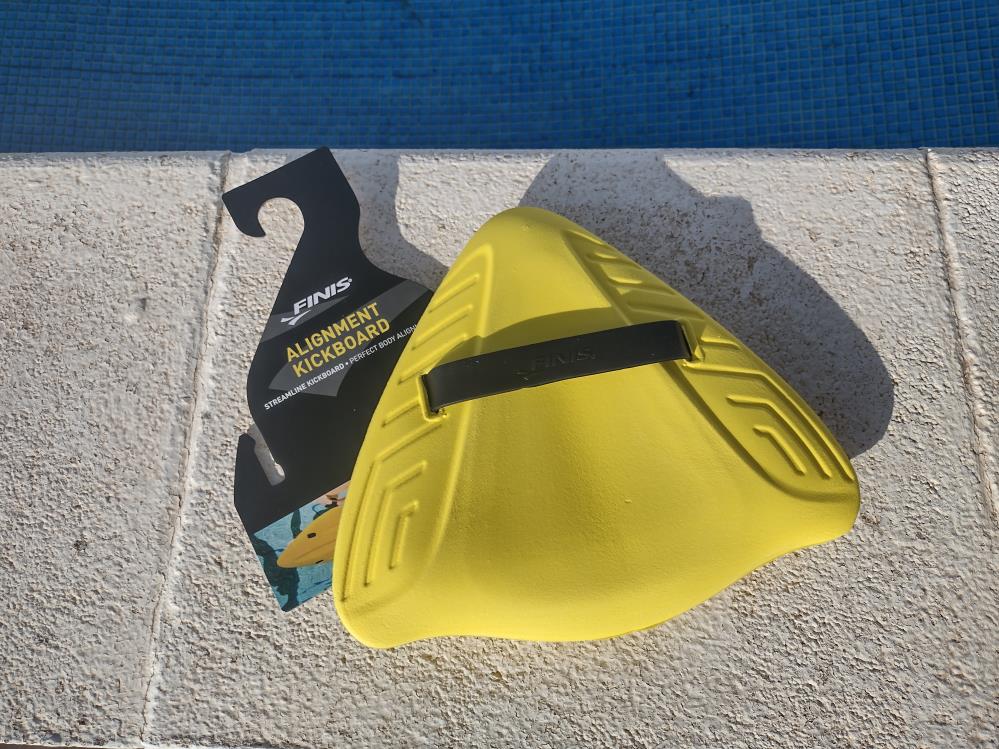
FREE Open Water Swimmer Workout Book
Anti-Fog Spray
If you find that your goggles fog up in the pool, sea or lakes then try Cressi anti-fog. It is kind to the environment and works every time. It was developed for deep sea divers so more than good enough for the job!
It also helps your goggles last longer by keeping the rubber soft and supple.
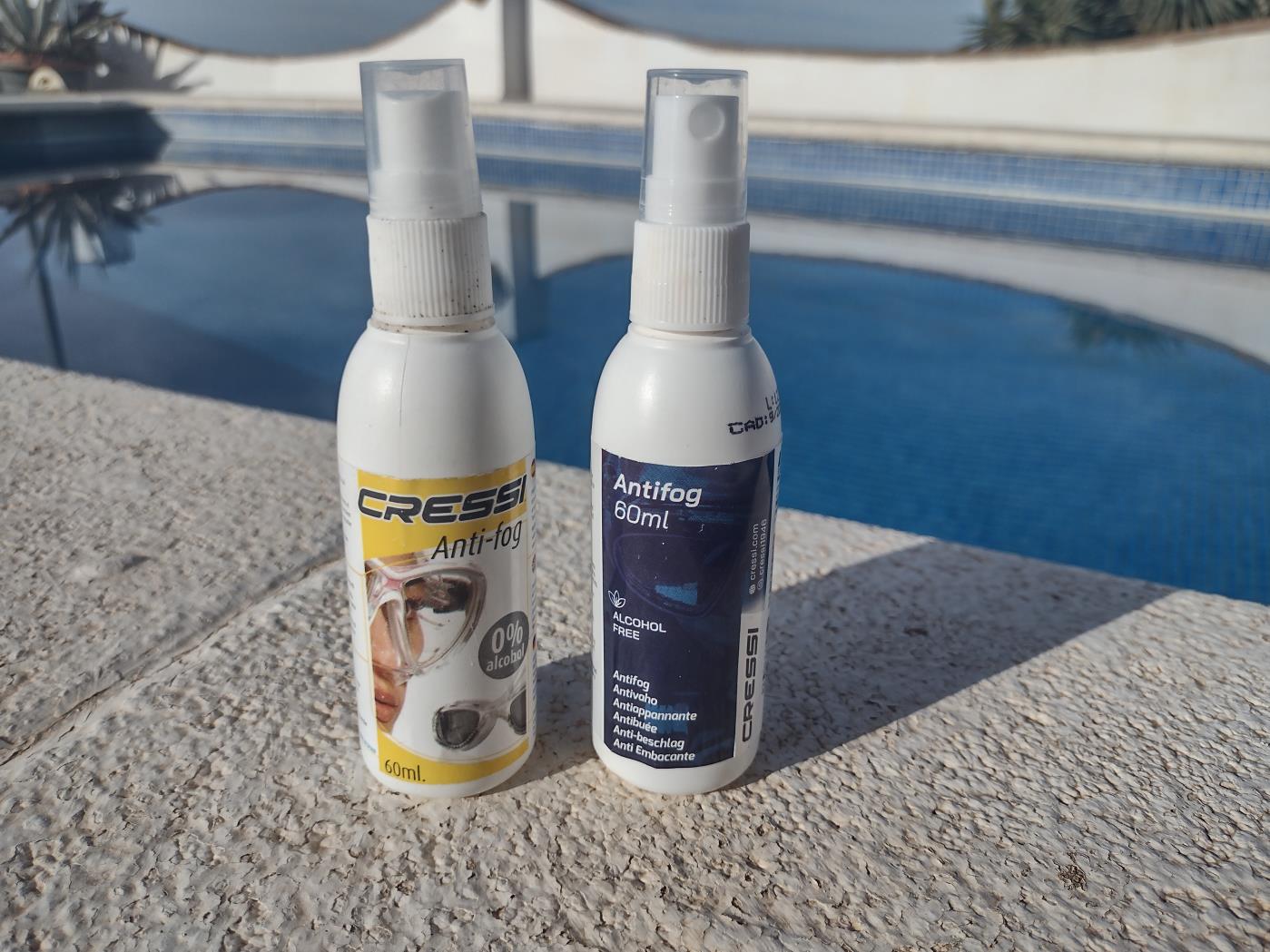
Cressi anti-fog spray to keep your swimming goggles fog free
Get your FREE Open Water Swimmer Workout Book
Goggles
My all time favourite goggles are the Zoggs Predator Flex and after many years of trying different styles and brands I always go back to these. They are great for both pool and open water swimming and have clear, coloured and lens that change with light conditions. They can come with a protective case which protects you goggles plus you can put your swimming hat and cressi anti-fog in there as well so you never forget to apply it.
Goggles are very personal but if you are looking for something that lasts a long time and can be used for both pool and open water swimming then give Zoggs Predator Flex goggles a try.
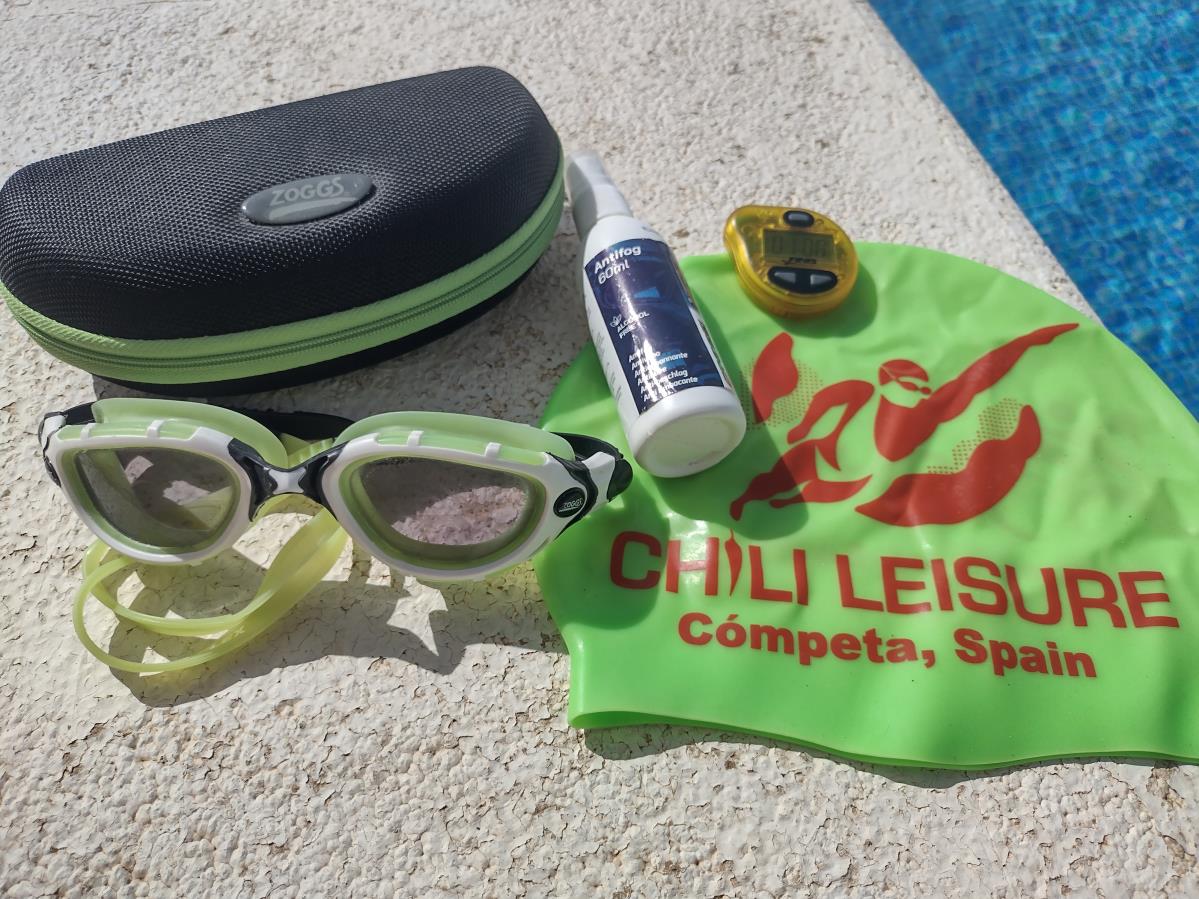
Zoggs Predator Flex Goggles, ChiliTri swimming hat, Cressi anti-fog spray and Zoggs protective case
Get your FREE Open Water Swimmer Workout Book
Pull Buoy
Last but not least you should get a pull buoy. Swimming pools tend to have their own pull buoys for swimmers to use but it's best to get your own as there are several types. The purpose of pull buoys is to create extra buoyancy for your hips, to bring your body position in line so you are more streamlined. This can help you to focus on the rest of your stroke, build core strength and slow down your stroke.
You place the buoy between your thighs or their ankles to provide support to your body without kicking your legs; this allows you to focus on training only your arms and developing both endurance and upper body strength.
You can read all about the different types and which one is best for you here.
Swimming Fins
Swimming fins are designed to help swimmers—both competitive swimmers and casual—develop a more powerful kick, increase their kick tempo, and improve ankle flexibility and leg muscles. They also help swimmers move through the water faster and improve body position, which makes them a very attractive piece of swimming equipment.
Swimming fins are shorter than diving fins and even the smallest versions can make a big difference. They should be comfortable and not too tight - tight fins can cause cramping. If you are new to swim fins then start with only a few laps and build up to more and more laps over time. They are great to help with drills such as side kicking, 616, 636 and even the catch up drill.
A good example of a short swim fin is the Maru training fin.
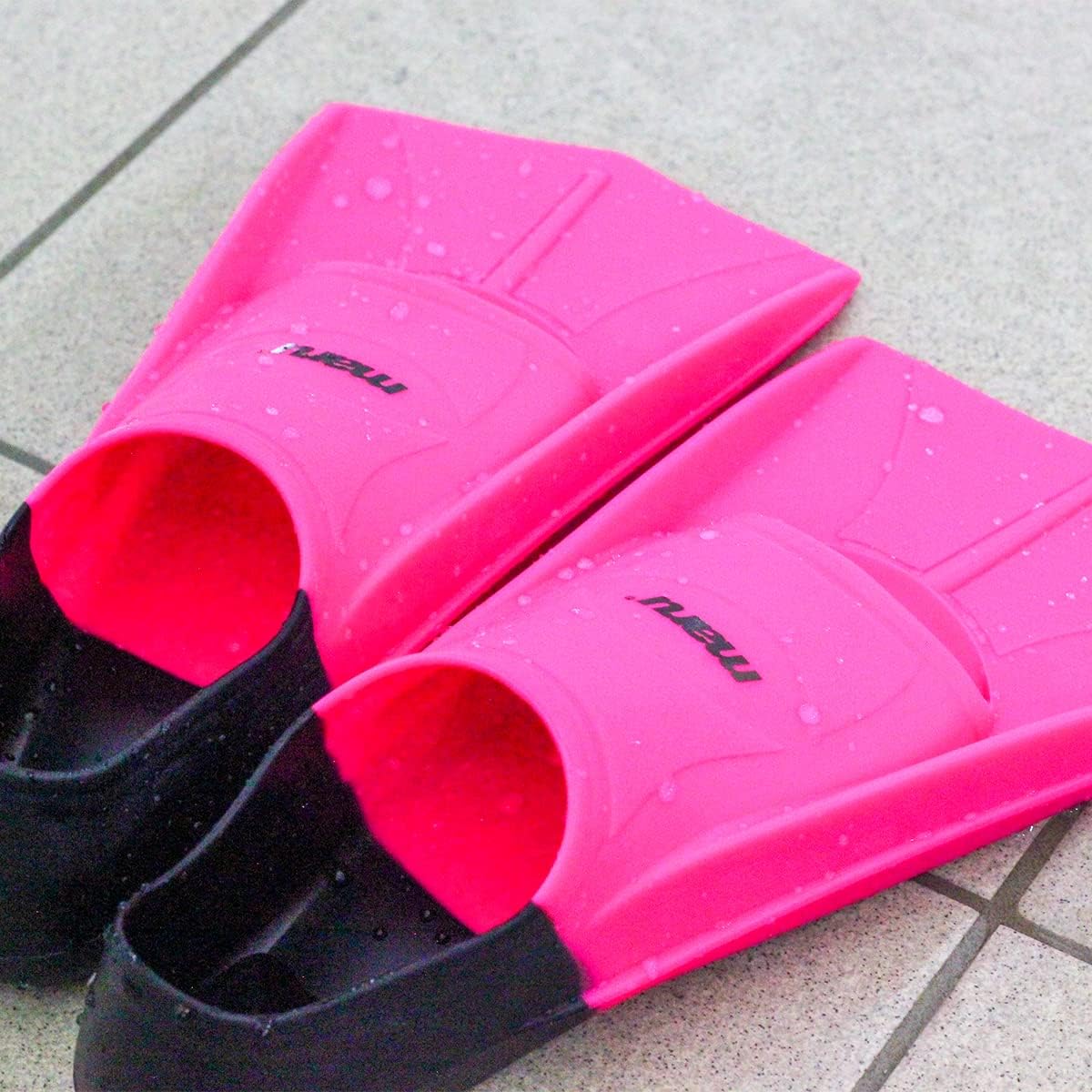
Get your FREE Open Water Swimmer Workout Book
If you are looking for other swimming kit please consider supporting our ChiliTri Club by purchasing from Proswimwear.
Other Swimming Drills and Terms
There are other swimming drills and terms specific to different coaches, so this is not an exhaustive list. If your coach asks you to do a drill you have not heard of then they should be able to demo the move to you and explain the benefits of the drill. The same is true for swimming terms you do not recognise.
Would you like a FREE swimming workouts for triathletes e-book with tips, workouts, drills and more – download it here.
Are you training for an event or want to improve your swim technique? you can find plans below:
Swimming
training plans on TrainingPeaks.
Swimming
training plans on FinalSurge.
Would you like a free training plan? Claim your free plan or swimming e-book.
Karen Parnell is a Level 3 British Triathlon and IRONMAN Certified Coach, 8020 Endurance Certified Coach, WOWSA Level 3 open water swimming coach and NASM Personal Trainer and Sports Technology Writer.
Karen is currently studying for an MSc in Sports Performance Coaching at the University of Stirling.
Need a training plan? I have plans on TrainingPeaks and FinalSurge:
I also coach a very small number of athletes one to one for all triathlon and multi-sport distances, open water swimming events and running races, email me for details and availability. Karen.parnell@chilitri.com
Get your FREE Guide to Running Speed and Technique
Get your FREE Swim Workouts for Triathletes E-book
Get your FREE Open Water Swimming Sessions E-Book
10 Essential Pool Swim Drills for Triathletes Infographic
After reading a great article in 220 triathlon magazine about the essential swimming drills for triathletes I though I would make an infographic about it to capture the drills on a single sheet.
You can read the full article here.
Get in touch if you would like a PDF version of the Infographic. karen.parnell@chilitri.com
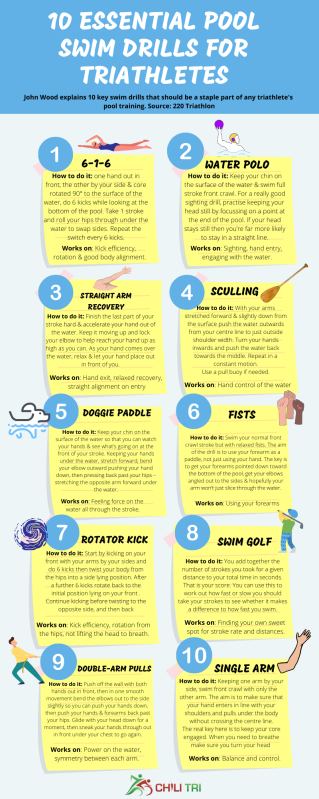
Get your FREE Open Water Swimmer Workout Book
Finis Agility and Freestyler paddles, fins, HUUB Toy Buoy and Big Buoy pull buoys at the swimming pool in Competa, Spain
Get your FREE Open Water Swimmer Workout Book
FAQ: Swimming Drills and the Benefits
What are swimming drills?
Swimming drills are specific exercises or techniques that focus on improving various aspects of swimming mechanics, such as body position, stroke technique, breathing, and overall efficiency in the water. They are often used in swim training to target specific areas of improvement.
What are the benefits of incorporating swimming drills into training?
Swimming drills offer several benefits to swimmers of all levels:
- Technique improvement: Drills allow swimmers to isolate and focus on specific aspects of their stroke technique, helping them develop proper form, body alignment, and efficient movement patterns in the water.
- Increased body awareness: By breaking down the swimming stroke into smaller components, drills enhance swimmers' understanding of their body position, movement, and the impact of their actions in the water.
- Efficiency and speed: Refining stroke mechanics through drills can lead to improved efficiency and speed in the water. Streamlined technique and reduced energy wastage contribute to faster swim times.
- Muscle memory development: Consistently practicing drills helps develop muscle memory, allowing swimmers to perform efficient and effective movements automatically without conscious effort.
- Injury prevention: By focusing on proper technique, swimming drills can help identify and correct imbalances or flaws in stroke mechanics that may contribute to overuse injuries.
- Variability and engagement: Incorporating drills into swim workouts adds variety, making training more engaging and enjoyable. They break up the monotony of continuous swimming and add a new dimension to the training experience.
What are some common swimming drills and their specific benefits?
There are various swimming drills targeting different aspects of the stroke. Here are a few examples:
- Catch-up drill: This drill involves extending one arm forward and waiting until the other arm completes the full stroke cycle before beginning the next stroke. It promotes proper arm extension, timing, and body rotation.
- Fist drill: Swimmers perform the drill with closed fists, excluding the use of their hands. It encourages forearm and upper body engagement, promoting a more effective catch and pull.
- Kickboard drill: Swimmers use a kickboard to isolate the lower body and focus on developing a strong kick and improved body position.
- One-arm drill: Swimmers swim using only one arm while the other arm remains extended forward. This drill enhances body rotation, stroke symmetry, and reinforces a strong catch and pull.
- Tarzan drill: Swimmers keep their heads above water, similar to the way Tarzan swims, to improve sighting, body alignment, and breathing technique in open water conditions.
How should swimming drills be incorporated into a training routine?
Here are some tips for incorporating swimming drills into your training routine:
- Warm-up: Include a few drill-focused warm-up exercises before starting your main workout. This helps activate specific muscle groups and establish a focus on technique from the beginning.
- Drill sets: Designate specific sets in your workout to focus solely on swimming drills. This allows you to concentrate on technique without the pressure of speed or distance.
- Progression: Gradually introduce more advanced or challenging drills as your technique improves. Start with basic drills and progress to more complex ones as you become comfortable and proficient.
- Mix and match: Combine different drills within a set to target different aspects of your stroke. This adds variety and keeps the training session engaging.
- Coach or expert guidance: If possible, seek guidance from a swim coach or experienced swimmer who can evaluate your technique, recommend appropriate drills, and provide feedback to help you get the most out of your training.
What kit will you need to do swimming drills?
Common swimming kit includes a pull buoy, paddles, kickboard, goggles, fins and swimming hat.
To practice drills with proper form, focus on quality over quantity, and be patient with your progress. Regular and consistent practice will yield long-term benefits in your swimming performance.
FREE Open Water Swimmer Workout Book
This website uses affiliate links which may earn a commission at no additional cost to you. As an Amazon Associate I earn from qualifying purchases.
#swimming #swimmingdrills #swimmingterms #triathlon #chilitri #swimterminology #swimplans #trainingplans #swimmingtrainingplan #cyclingtrainingplan #runningtrainingplan #swimming #cycling #running
